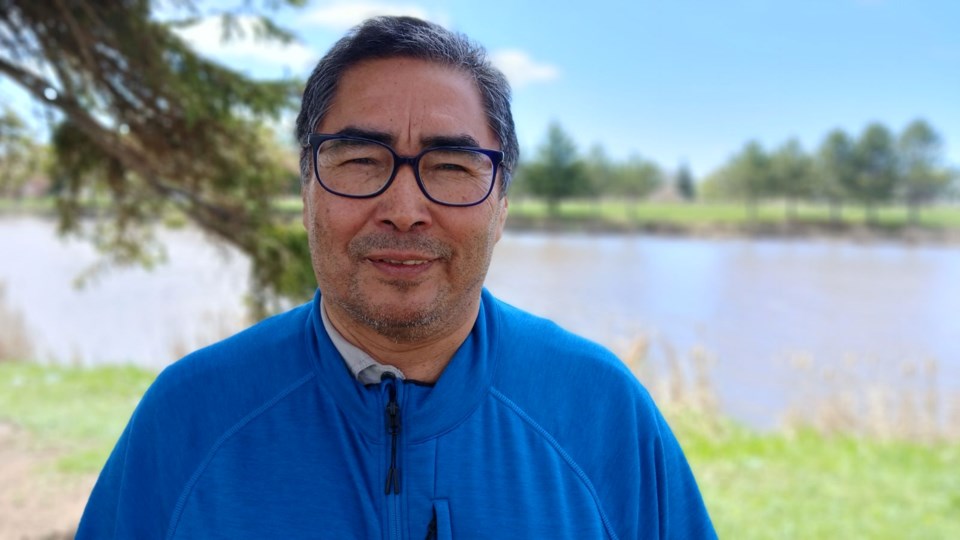GRASSY NARROWS – Citizen groups in Manitoba are sounding the alarm on risks a nuclear waste site in Northwestern Ontario would pose to downstream communities and watersheds, and that’s music to the ears of Chief Rudy Turtle.
“That sounds good, that we’ve got more people speaking out,” the Grassy Narrows (Asubpeeschoseewagong) First Nation chief said in an interview Monday.
Turtle was responding to news that Concerned Citizens of Manitoba and the Manitoba Energy Justice Coalition will co-host a public forum Wednesday in Winnipeg about what they say are risks of a proposed nuclear waste repository that could be built near Wabigoon Lake.
Grassy Narrows is one of six First Nations in the Land Defence Alliance, a coalition demanding respect for First Nation land rights and sovereignty.
A proposed deep geological repository for nuclear waste near Wabigoon Lake is a key issue for the alliance.
The Nuclear Waste Management Organization, funded by nuclear power producers, wants to construct a deep-underground facility for the long-term storage of spent nuclear fuel.
The organization has narrowed site selection for the repository down to two final candidates: the Revell site between Ignace and Wabigoon Lake, and a location near Lake Huron in southwestern Ontario.
Site selection is slated to be finalized by the end of this year, with construction of the repository projected at either place to start around 2034 and finish perhaps a decade later.
Instead of deep-underground storage, the nuclear industry could pursue a sort of “rolling stewardship, whereby (waste) is retrievable in the inevitable case where its packaging or container starts to deteriorate,” Anne Lindsey, a member of Concerned Citizens of Manitoba, said in an interview from Winnipeg.
“And preferably that would be closer to the sites where the material is produced, rather than having to transport it on roads to far distances like to Northwest Ontario,” she continued.
“So that would be, I think, the preferred option that we would like to see explored.
“Along with that, I think there would need to be a consideration of stopping the production of (nuclear waste) because it's just a continuous, ongoing problem to deal with the waste so long as the production continues.”
The other First Nations in the Land Defence Alliance are Kitchenuhmaykoosib Inninuwug, Wapekeka, Neskantaga, Muskrat Dam and Onigaming.
The Grassy Narrows chief said he hopes residents of Ignace and Wabigoon Lake Ojibway Nation, who have a say in the repository’s siting process, give more than a little thought to downstream communities.
“I really hope that the people in Ignace and Wabigoon Lake that support it would take a good solid look at it and really think about it,” Turtle said.
“The damage that could be done to the environment is forever. The possibility of a leak is there, possibly 30 or 40 years from now, and it’s not fair to the next generations that will be living then.”
The Nuclear Waste Management Organization did not respond to requests for comment Monday.
